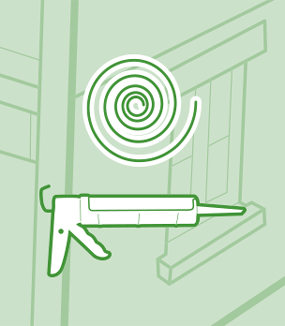How to seal air leaks with caulk
According to the U.S. Department of Energy, a typical family spends nearly $2,000 each year on energy bills (gas and electric) in the United States today. Unfortunately, some of that money is squandered due to leaking windows, doors, old appliances or inefficient heating and cooling systems.
Replacing old windows and appliances with more energy efficient ones is not always budget-friendly, but using caulk to seal air leaks can be a great way to help your family save money on energy bills.
So grab a caulk gun and spend an hour or so sealing the air leaks around your house. You’ll be surprised how a little effort can make a significant difference in the amount of energy your home consumes. The steps below, based on a do-it-yourself project from the U.S. Department of Energy, make it easy to get started.
How to seal air leaks with caulk
According to the U.S. Department of Energy, a typical family spends nearly $2,000 each year on energy bills (gas and electric) in the United States today. Unfortunately, some of that money is squandered due to leaking windows, doors, old appliances or inefficient heating and cooling systems.
Replacing old windows and appliances with more energy efficient ones is not always budget-friendly, but using caulk to seal air leaks can be a great way to help your family save money on energy bills.
So grab a caulk gun and spend an hour or so sealing the air leaks around your house. You’ll be surprised how a little effort can make a significant difference in the amount of energy your home consumes. The steps below, based on a do-it-yourself project from the U.S. Department of Energy, make it easy to get started.



Project difficulty: Easy
Estimated energy savings: 5-20%*
Time to complete: 1-2 hours
Materials needed: Caulk gun, caulk, putty knife, stiff brush or large screwdriver, paper towels or rag

If you're not sure which windows or other areas need to be sealed with caulk, the DIY Network suggests holding a lit candle close to suspected gaps on a windy day. If the flame moves toward you, air is likely pushing through. You can concentrate your caulking efforts on those areas.
*The U.S. Department of Energy says you can save up to 20% on total energy costs with this project, but your savings will depend on the state of your home and the type and condition of your HVAC unit.